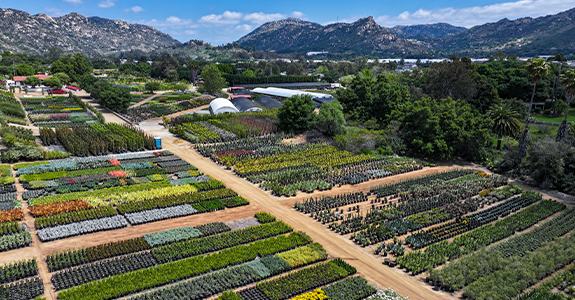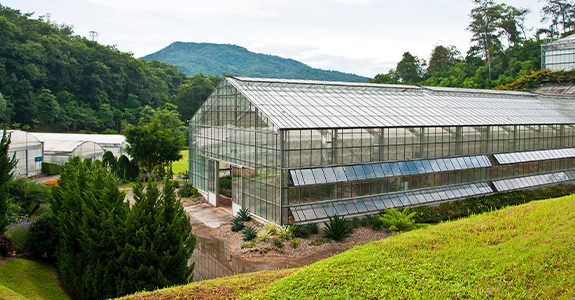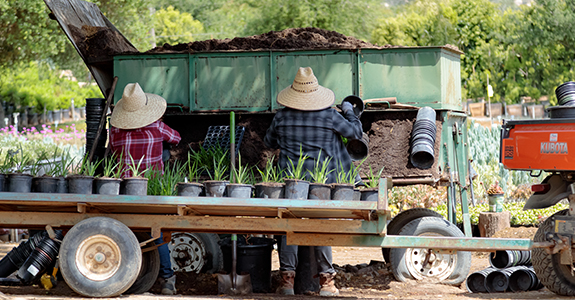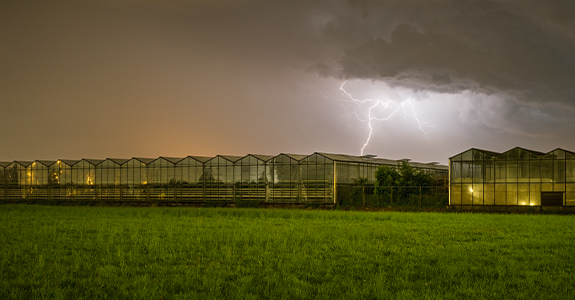A deep dive into horticultural commercial property insurance

As a horticultural business owner, you face unique challenges. Running a greenhouse, garden center, retail florist, nursery, or landscape company requires careful attention to delicate plants, specialized equipment and custom-built structures. Safeguarding these investments is vital—this is where commercial property insurance shines.
Let’s take a closer look at what this insurance option covers and how it can help further protect your livelihood.
What does commercial property insurance cover?
As with any insurance coverage option, it’s important to be aware of what commercial property insurance does and doesn’t cover. In the event of fire, theft, vandalism, or natural disaster, commercial property can provide coverage for your:
Buildings:
This includes your office, greenhouses, retail shops, or any other structures where you conduct business.
Equipment:
This includes items such as irrigation systems and forklifts to specialized tools. You can also receive coverage for equipment breakdowns that lead to lost productivity.
Crops, stock, and inventory:
These are the lifeblood of your horticultural business. Insurance helps protect you after storm damage or if the breakdown of a climate-controlled building leads to losses of these vital assets.
Why is commercial property insurance essential for horticultural businesses?
If your business has physical assets, commercial property insurance is essential. But it’s particularly crucial for horticultural businesses, as they face unique risks that make this coverage a must-have.
Greenhouses, garden centers, and wholesale florists rely heavily on specialized, controlled environments and equipment that are expensive to replace.
A sudden fire could destroy a greenhouse full of plants, or refrigeration equipment could fail, resulting in the loss of thousands of dollars in fresh flowers.
Severe weather could also damage irrigation systems or shatter glass housing. Scenarios like these could cripple operations for businesses that aren’t adequately insured.
4 factors to consider for commercial property coverage
Review these keys areas when it comes to the amount or scope of commercial property insurance you want for your business:

Cost
The cost of commercial property insurance varies depending on several factors, including the amount of coverage you need. A higher deductible can help lower your monthly premiums. You can also explore risk mitigation strategies like installing security systems to help lower your premiums.

Coverage limits
When purchasing a policy, you’ll need to decide what assets you want to protect and for how much. Evaluate whether you need additional coverage, such as business interruption, which can help you recover lost income if your company is unable to operate due to covered damages.

Location
If you’re in an area prone to extreme weather events, you may need additional coverage or specialized policies.

Age of buildings and equipment
The older your buildings or equipment are, the more likely they are to fail or incur damage. Older properties may require higher premiums to ensure adequate coverage because they present a higher risk and will cost more to replace.
Remember to update your policy as your business evolves
As your business expands or changes, your insurance should evolve, too. It’s essential to keep your policy current to help ensure you’re adequately protected when you make changes such as adding new buildings or equipment or moving to a new location. Review your policy annually and adjust as necessary.
You don’t have to do this alone. Contact your insurance provider to review your policy and commercial property coverage. You could also explore other insurance options, such as umbrella coverage, that can help you cover unexpected losses.
If you’d like assistance or want to request a quote, contact us. We’re here to help you and your business.

Safeguard Your Business From Severe Weather

Help protect your business from cyberattacks

Top risks for your horticultural business
The information in this article is for informational or entertainment purposes only. View our disclaimer by going to terms and conditions and clicking on Learning Center disclaimer in the table of contents.


